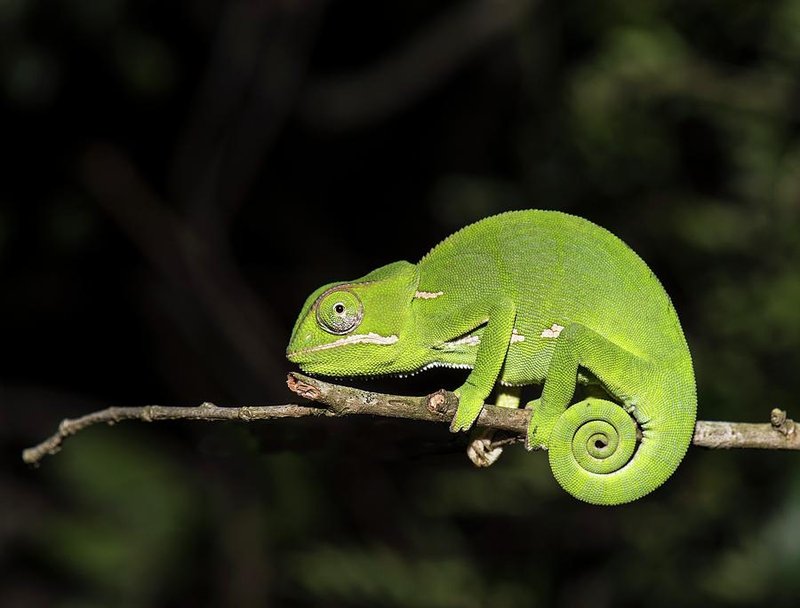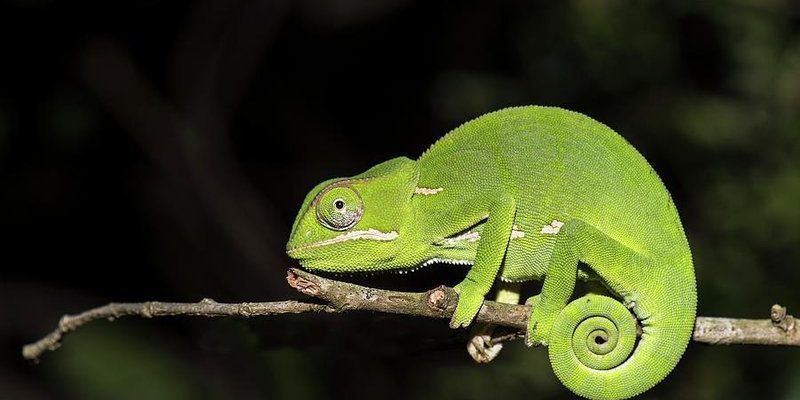
At first glance, it might seem like these tiny magicians can morph their skin color at will, like a superhero changing outfits. However, the reality is a bit more nuanced. While they do have the ability to change colors, it’s not just for show. Color change in flap-necked chameleons is deeply tied to their emotions, social interactions, and environmental conditions. So, let’s explore the fascinating reasons behind this captivating ability.
Understanding Color Change in Chameleons
To grasp how the flap-necked chameleon changes color, we need to look at its unique skin structure. The skin of these reptiles isn’t just a simple layer; it’s quite complex. Chameleons have several layers of skin, with the uppermost layer containing specialized cells called *chromatophores*. These cells contain different pigments—red, yellow, and brown.
Underneath these chromatophores are layers with reflective properties. When a chameleon feels threatened or seeks to impress a mate, it can expand or contract these chromatophores. This action alters how light reflects off its skin, allowing for a dazzling display of color. It’s like controlling a mood ring but with a whole lot more flair!
Why Do Flap-Necked Chameleons Change Colors?
You might be wondering—why do they change colors in the first place? The answer lies in a mix of survival and social signaling. Color change serves multiple purposes:
- Camouflage: When threatened by predators, flap-necked chameleons can shift to colors that blend them into their surroundings, making them harder to spot.
- Communication: These reptiles use color to communicate their mood and intentions to other chameleons. Bright colors often signal aggression or dominance, while muted tones may indicate submission or stress.
- Temperature Regulation: Color change can also help with thermoregulation. Darker colors absorb more heat, which can be crucial in cooler environments.
So, next time you see a chameleon change color, it’s not just a party trick—it’s part of its survival toolkit.
Debunking Myths About Chameleon Color Change
Chameleons have been the subject of many myths, and the flap-necked chameleon is no exception. One common misconception is that these creatures change color to blend seamlessly into any background, much like octopuses or cuttlefish. While they do change colors for camouflage, it’s not as dynamic or all-encompassing as some might think.
Another myth is that their color change reflects their surroundings perfectly. In reality, flap-necked chameleons can only express a limited range of colors based on their skin’s pigmentation and physiological condition. So, while they may shift to brown on a tree branch, they won’t turn bright blue against the sky, for instance.
Lastly, there’s the myth that they change colors randomly or just for fun. As we’ve seen, color change is a response to specific stimuli, not a whimsical choice.
What Affects Their Color Change?
Several factors influence how and when flap-necked chameleons change their colors. Understanding these factors provides a clearer picture of their behavior:
- Emotional State: Just like us, chameleons can feel stress, excitement, or aggression. Each emotion prompts a different color response. For example, bright colors may indicate excitement or readiness to mate, while dull hues show stress.
- Temperature and Lighting: Environmental factors play a significant role. In colder conditions, a chameleon might turn darker to absorb more heat. Conversely, in bright light, it could lighten to reflect heat and avoid overheating.
- Social Interactions: During breeding season, males may display bright colors to attract females or ward off rival males. The health and vibrancy of their coloration can tell others how fit they are.
So, the next time you observe a flap-necked chameleon, keep these factors in mind. Their color changes aren’t random; they serve a purpose.
How Do Flap-Necked Chameleons Compare to Other Chameleons?
When comparing flap-necked chameleons to other species, it’s fascinating to see the variations in their ability to change colors. For example, the Panther chameleon can display even more vibrant colors and patterns. Its color change is often more dramatic and can be influenced by its surroundings, making it a popular choice among reptile enthusiasts.
In contrast, the Veiled chameleon tends to change colors mainly in response to stress or temperature, rather than for social signaling. This gives it a more subdued color palette compared to our flap-necked friends.
Each species has evolved its unique adaptations for color change, driven by its environment and social interactions. The flap-necked chameleon, with its striking ability, stands out in this colorful reptile family.
Keeping Flap-Necked Chameleons as Pets
If you’re considering a flap-necked chameleon as a pet, it’s important to understand their needs. These creatures not only require a proper diet but also specific environmental conditions to thrive. Here are a few tips for keeping one:
- Habitat: They need a terrarium with adequate space, humidity, and climbing structures. Live plants can help mimic their natural habitat.
- Diet: A varied diet of insects, such as crickets and mealworms, will keep them healthy. Dusting their food with calcium supplements is also essential.
- Temperature Control: Creating a proper temperature gradient within the terrarium is essential. Use heat lamps to provide basking spots and keep cooler areas for them to retreat.
By providing a suitable environment, you not only help them thrive but also give yourself the joy of watching their fascinating color displays.
The flap-necked chameleon’s ability to change colors is a captivating topic, filled with surprises and misconceptions. While they can’t change into any color at will, their transformations are deeply tied to emotion and survival. Understanding the truth behind their color change helps us appreciate these remarkable creatures even more.
Whether you’re a future chameleon owner or simply curious about these fascinating reptiles, knowing about their behaviors and needs makes the experience more enriching. So, the next time you see a flap-necked chameleon flaunting its colors, you’ll know there’s a whole lot more going on beneath the surface than just a pretty display.

